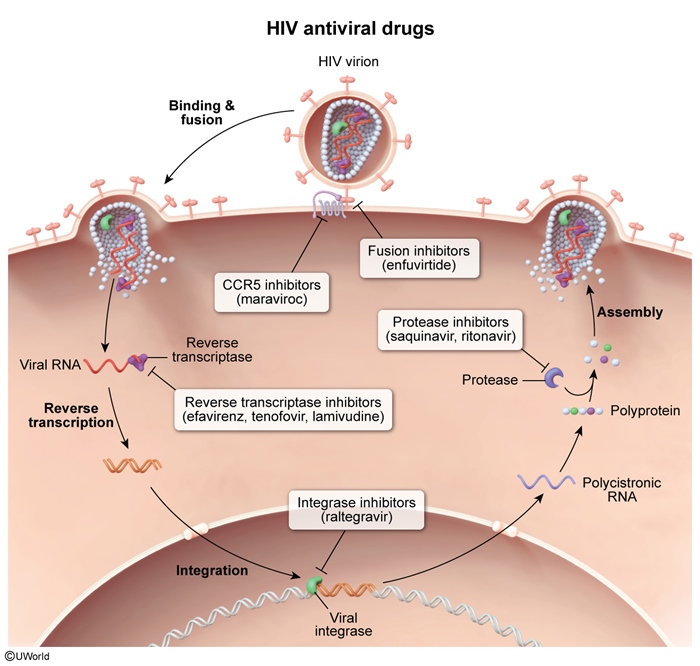HIV Antiretroviral Therapy (ART) And The Immune Reconstitution Inflammatory Syndrome (IRIS)
Article Sections
- Introduction
- HIV life cycle
- Overview of ART
- Nucleoside/nucleotide reverse transcriptase inhibitors
- Nonnucleoside reverse transcriptase inhibitors
- Protease inhibitors
- Integrase strand transfer inhibitors
- Fusion inhibitors
- CCR5 antagonists
- Other agents
- Treatment monitoring and failure
- Special considerations
- Immune reconstitution inflammatory syndrome following ART initiation
- Summary
Introduction
Antiretroviral therapy (ART) for HIV aims to suppress viral replication, restore immune function, and improve quality of life. ART has significantly reduced HIV-related morbidity and mortality.
HIV life cycle
Antiretroviral agents target different phases of the HIV life cycle (Figure 1), which can be briefly summarized as follows: After an HIV virion enters a host cell, viral RNA is released from the nucleocapsid and transcribed into double-stranded DNA by reverse transcriptase. The viral DNA then enters the nucleus and, through the actions of integrase, permanently inserts into the host cell's chromosomes to become a provirus. RNA polymerase II then transcribes viral mRNA from the proviral DNA. Once synthesized, HIV mRNA exits through the nuclear pores into the cytoplasm, where it uses the host cell's ribosomes to translate the enzymes, glycoproteins, structural proteins, and regulatory proteins needed to promote viral replication and transmission. The full-length mRNA also serves as the viral genome that is packaged into newly synthesized virions.
Continue Learning with UWorld
Get the full HIV Antiretroviral Therapy (ART) And The Immune Reconstitution Inflammatory Syndrome (IRIS) article plus rich visuals, real-world cases, and in-depth insights from medical experts, all available through the UWorld Medical Library.
Figures
